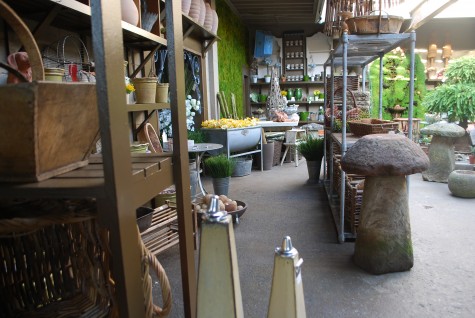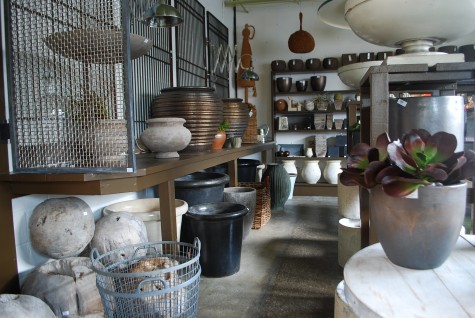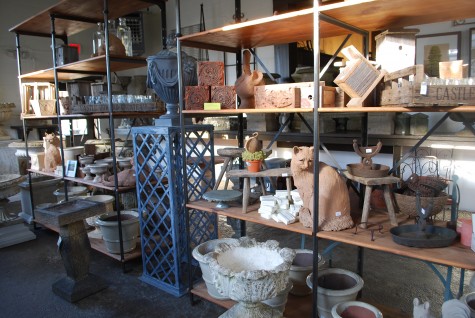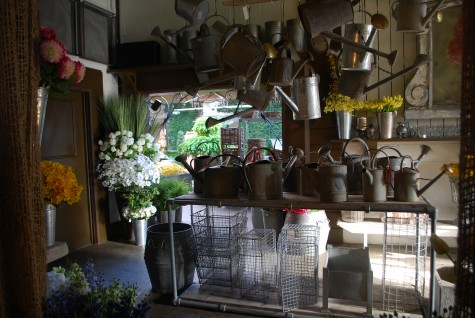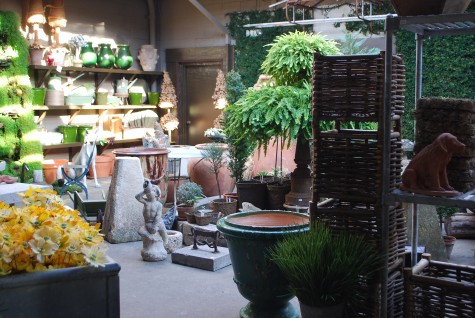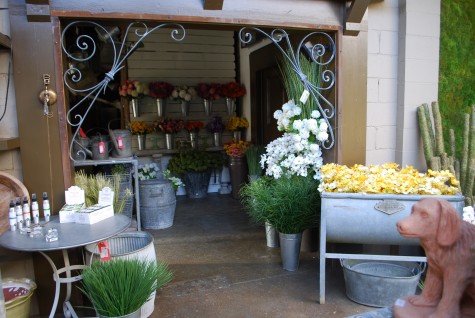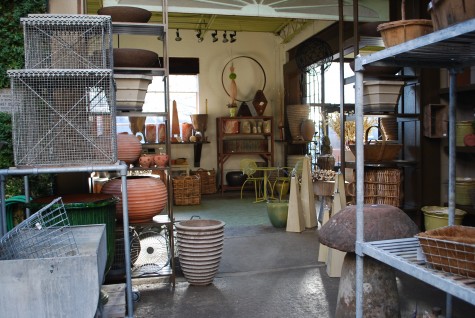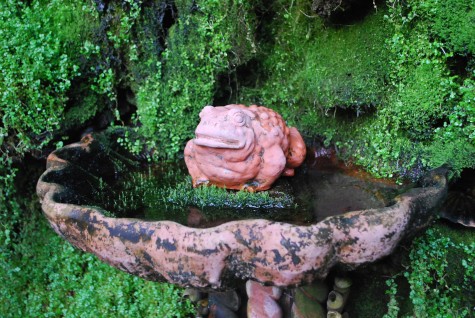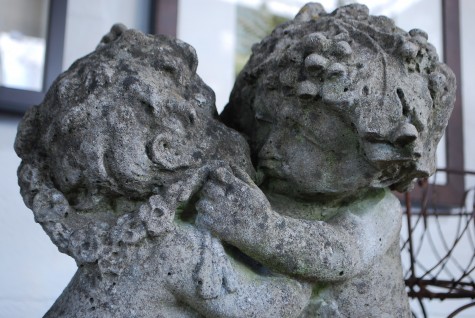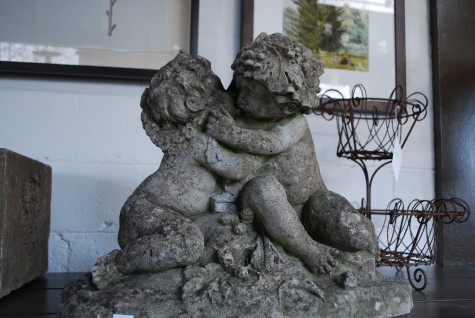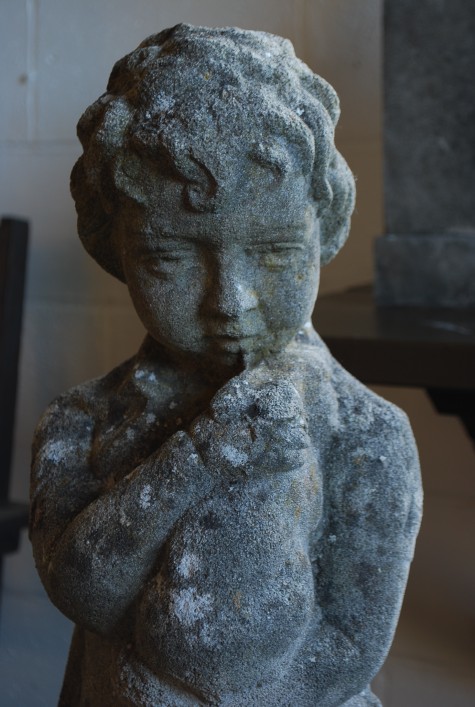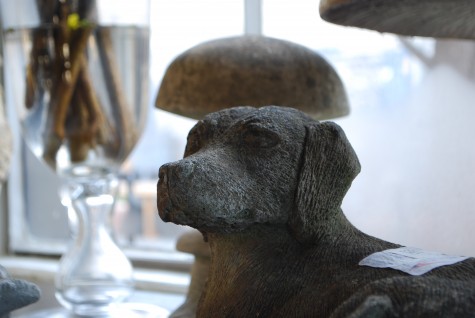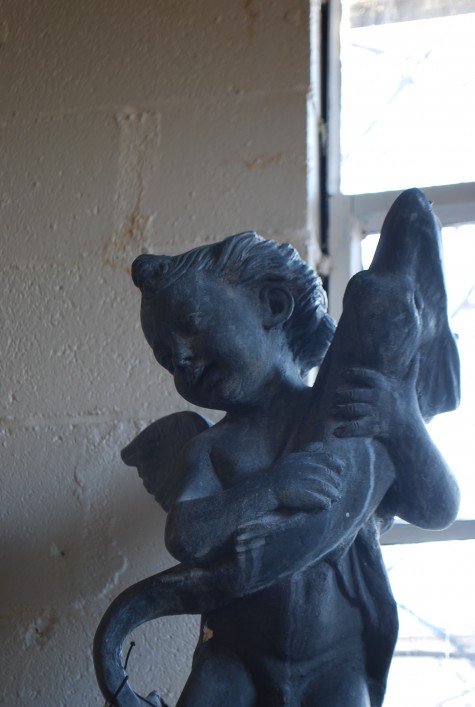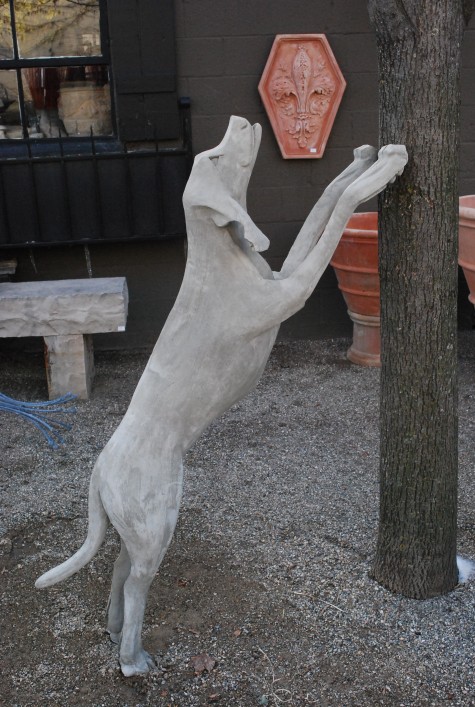Tomorrow is the fifteenth anniversary of the opening of Detroit Garden Works. I had been in the landscape design and construction business for ten years, when I decided to buy this building, and open a shop devoted to fine ornament and furnishings for gardens. Though I hardly knew it at the time, it was a very big move for me. Shops such as this were few and far between in the US, and not all that common in Europe. I wanted to be able to offer my landscape clients greater depth. Great landscapes imply a site, a collaboration, a gorgeous and arranged collection of plants-and some architecture. No plant or collection of plants fully represents a landscape. But those objects I place in a garden name names-they go on to evoke memories, create an atmosphere, and provoke the eye. Favorable circumstances enabled me to buy this property-an accountant common to both the seller and I who brokered the sale, and a friendly zoning ruling from Bloomfield Township.
 The closing took little time. But the property sat from March until August-I had to work. In late August of 1995, every truck I had pulled up, and parked. We had a lot of work to do.
The closing took little time. But the property sat from March until August-I had to work. In late August of 1995, every truck I had pulled up, and parked. We had a lot of work to do.
 The inside of the building-really rough. Today my office and library occupies this space. 15 years ago, this space was a wreck. This was the main office of the Little and David Machine Company, in the demolition phase. Less than ideal-about all I had to offer this project was my willingness to work. I hired a construction supervisor. Everyone who worked for me helped to transform this space.
The inside of the building-really rough. Today my office and library occupies this space. 15 years ago, this space was a wreck. This was the main office of the Little and David Machine Company, in the demolition phase. Less than ideal-about all I had to offer this project was my willingness to work. I hired a construction supervisor. Everyone who worked for me helped to transform this space.
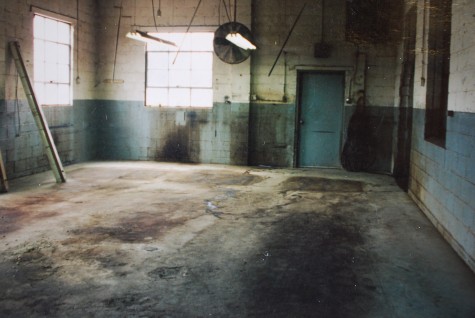 Oil coated the floors, and splashed up the walls. Reviewing these pictures, I am so pleased and amazed that I had the nerve to go ahead. My Mom cried when she saw this building-no wonder. In my mind-a great shop devoted to great objects for gardens. No oil soaked surface would deter me. I persisted. These floors defied cleaning. I finally hired a company to come in and shot blast the floors with steel shot. Once the top 1/4 inch of concrete was ground off, they were clean; Rob and I mopped all of the floors with clear epoxy to seal the porous concrete.
Oil coated the floors, and splashed up the walls. Reviewing these pictures, I am so pleased and amazed that I had the nerve to go ahead. My Mom cried when she saw this building-no wonder. In my mind-a great shop devoted to great objects for gardens. No oil soaked surface would deter me. I persisted. These floors defied cleaning. I finally hired a company to come in and shot blast the floors with steel shot. Once the top 1/4 inch of concrete was ground off, they were clean; Rob and I mopped all of the floors with clear epoxy to seal the porous concrete.
 Months were devoted to the shovelling out phase. Cleaning up and shovelling out a fouled site-this takes a lot of time. Everyone who worked for me signed up, and delivered. Every compelling story has much to do with the people who make that story happen. My group-they were great. Fortunately, none of us were shy about getting dirty. I was sure the space had not been cleaned in many years.
Months were devoted to the shovelling out phase. Cleaning up and shovelling out a fouled site-this takes a lot of time. Everyone who worked for me signed up, and delivered. Every compelling story has much to do with the people who make that story happen. My group-they were great. Fortunately, none of us were shy about getting dirty. I was sure the space had not been cleaned in many years.
 The shovelling out-we drove trucks in and out of the building and to the dump for almost 3 months.
The shovelling out-we drove trucks in and out of the building and to the dump for almost 3 months.
 Once the building was empty of all the debris-I was assessing spaces. How did it feel? To be on my own? Liked a rolling stone-just ask Bob Dylan.
Once the building was empty of all the debris-I was assessing spaces. How did it feel? To be on my own? Liked a rolling stone-just ask Bob Dylan.
 The greenhouse room-I removed the roof here, and stood pat with the roof open to the skies for better than 3 months. The rain washed away much of what worried me. The smell of oil finally dissipated. We were able to start the construction phase-new walls would enclose the office space from the shop. The construction phase took 3 months; we opened March 29, 1996. Two old clients had offered to throw me an opening party-what fun that was. To still be here all these years later- even better. My fifteenth anniversary-I am treasuring this moment.
The greenhouse room-I removed the roof here, and stood pat with the roof open to the skies for better than 3 months. The rain washed away much of what worried me. The smell of oil finally dissipated. We were able to start the construction phase-new walls would enclose the office space from the shop. The construction phase took 3 months; we opened March 29, 1996. Two old clients had offered to throw me an opening party-what fun that was. To still be here all these years later- even better. My fifteenth anniversary-I am treasuring this moment.

